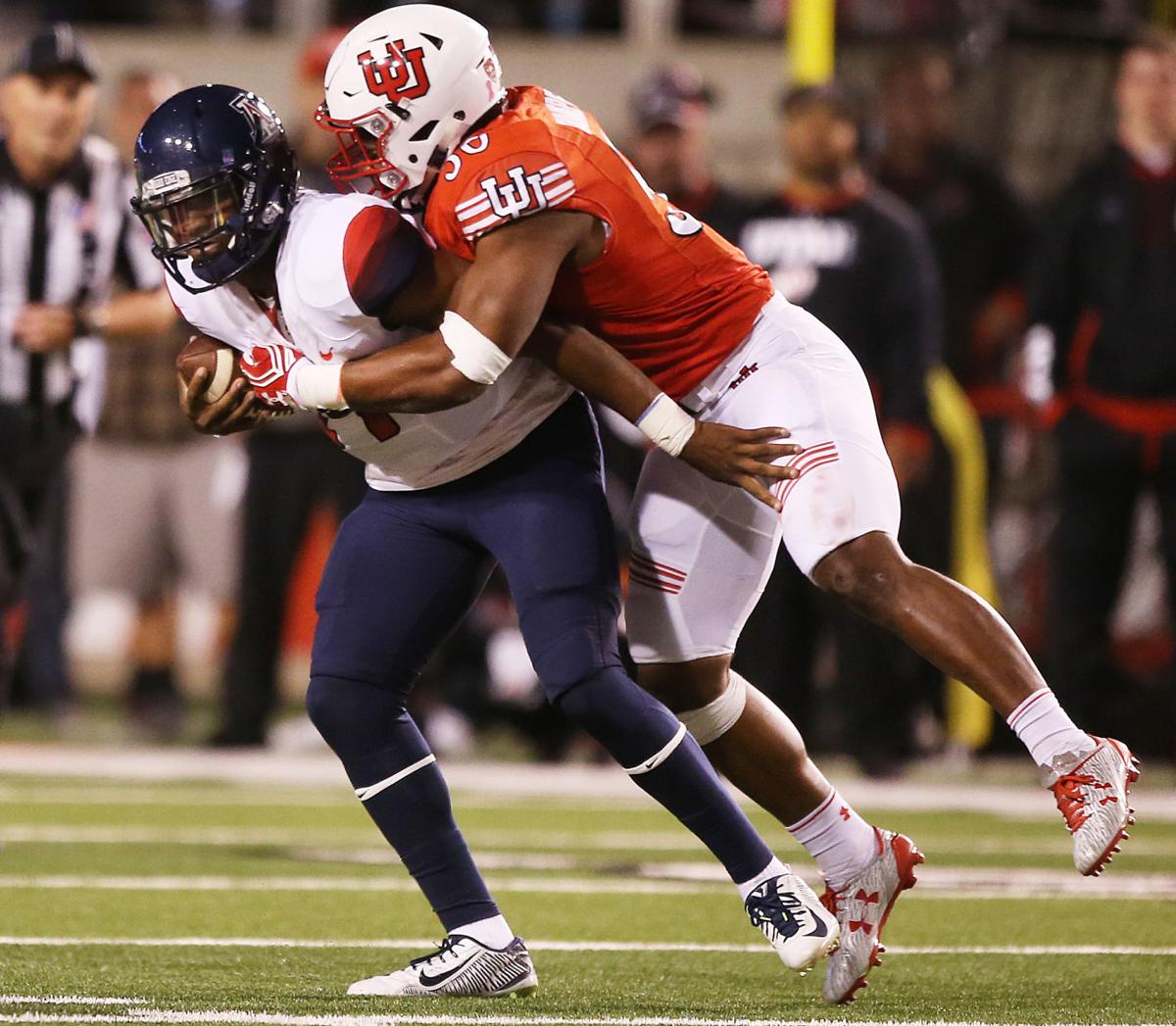Snow College tackle Garett Bolles was the most highly-recruited player in the 2015 Western States Football League. He twice played against Pima College, including the WSFL championship game, and also played in Yuma, Phoenix, Scottsdale and Thatcher.
He had his own virtual tour of Arizona.
Yet Arizona did not recruit Bolles, who became a first-team All-Pac-12 player at Utah. But Oregon, Florida, Arkansas and Michigan State did.
Last week, the Denver Broncos drafted Bolles in the first round, No. 20 overall.
The Utes had seven others players selected in the NFL draft. According to Rivals.com, Arizona did not offer a scholarship to any of those Utah draftees, including Phoenix Desert Vista center J.J. Dielman.
Arizona did not have a player drafted.
Getting shut out in the NFL draft is not an indictment on any college football program, but from 1982-2001, a stretch in which Arizona averaged 7.2 victories per season, the Wildcats were never shut out on draft day.
Over the past two seasons, which led to the 2017 draft, Utah was 19-7. Arizona 12-15.
It’s all connected.
To be fair, four of Utah’s draftees, including Bolles, played high school football in Utah, a burgeoning turf for Pac-12 prospects strengthened by the state’s growing Polynesian population. Three of the Utes drafted last week are Polynesians: linebacker Pita Taumoepenu, tackle Sam Tevi and guard Isaac Asiata.
One of the reasons the Utes have jumped ahead of Arizona in the Pac-12 South is that coach Kyle Whittingham has prospered by his ties to the Polynesian football community. The Utes have 22 Polynesians listed on their 2017 roster.
Arizona has three.
Three months ago, Pima College standout Jordan Agasiva, a Polynesian lineman from Honolulu, was recruited by Auburn, Louisville, TCU, Oregon State, Washington State and by Kansas State assistant coach Charlie Dickey, a former Arizona player and coach.
Agasiva, who is 6 foot 5 and 310 pounds, chose Utah. He was not offered a scholarship by Arizona. He played seven miles from the Lowell-Stevens Football Facility.
Over the long haul, the NFL draft is the surest link to college football success. There are few better examples than Arizona.
In the NFL drafts of 1990-2000, Arizona had 34 players selected in the traditional 1-through-7 rounds process, by far the most of any period in school history. In the ’80s, Arizona had 19 players chosen. From 2001-10, the Wildcats had 17 draftees. Predictably, Arizona has been unable to match the winning consistency of the ’80s and ’90s when Larry Smith and Dick Tomey acquired more players who developed into NFL prospects.
The 1990s were the glory years of UA football. It can be traced to better player evaluation and development. Here’s how the Pac-10 finished at the top from 1990-99:
Washington 82-35-1
Arizona 71-46-2
Oregon 70-48
UCLA 69-46
USC 68-49-4
Incredibly, Arizona had a superior decade compared to both USC and UCLA, and that’s because the Wildcats had 34 draftees, almost double that of any other decade in school history.
Some of it was good fortune: Six of those drafted players were from Tucson: Amphi’s Michael Bates, Salpointe’s John Fina, Catalina’s Richard Griffith, Sahuaro’s Steve McLaughlin, Tucson’s Sean Harris and Cholla’s Mike Scurlock.
Another part of the success was that Tomey was the first Pac-12 coach to make recruiting the Polynesian community a priority. That was not a shock. Tomey had been Hawaii’s head coach for 10 years. As Arizona experienced its best decade in football history, Polynesian players became difference-makers in Tucson.
Who? Joe Salave’a, Brandon Manumaleuna, Steven Grace, George Malauulu, Van Tuinei, Manuia Savea, Keoni Fraser, Makoa Freitas, Young Thompson, Nick Fineanganofo, Joe Tafoya and Edwin Mulitalo. Seven from that group were drafted.
Over the last five years, five UA players were selected in the NFL draft. Utah: 14. Another Pac-12 newbie, Colorado, which struggled through a long rebuilding process culminating with the 2016 Pac-12 South title, had four players drafted last week.
That’s more than any class in the Rich Rodriguez years.
It would be nice to report that this is a one-year slippage at Arizona. But if you evaluate the UA’s roster, it seems unlikely the Wildcats will have a player drafted in April of 2018, either.
The only time in its Pac-12 history that Arizona went two years in succession without an NFL draft pick was 2004-05. That’s when Mike Stoops paid the price for John Mackovic’s recruiting failures and the Wildcats went 18-40 over five years.
One dreaded conclusion is that this is the beginning of the new reality of UA football, joining other basketball-centric schools like Duke, Kansas and Kentucky as kick-around fodder for the game’s traditional powers.
Neither Duke nor Kansas nor Kentucky, which had a combined 13-24 record last fall, had a player drafted last week, either.





